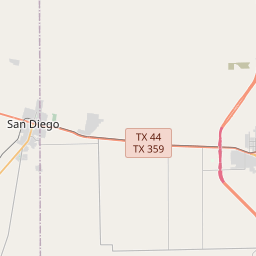Alice Cemetery
Historical marker location:






This burial ground has served Alice-area residents for more than 100 years, and the story of its genesis and ongoing use involves many individuals in the community’s history.
By the late 1880s, Frederic B. Nayer lived in this area, then part of Nueces County. The Collins community had about 2,000 residents by 1891, but the San Antonio & Aransas Pass Railroad Co. built through the area three miles west of the town to intersect the Texas Mexican Railway. Nayer helped sell lots at the rail intersection for the new townsite that would become Alice, and in 1903, he donated the land for the city burial ground, initially called Alice Fraternal Cemetery.
In 1925, the Alice Cemetery Association formed and the name of the burial ground changed. Martha Fawcus served as the association’s first president. Under her leadership in 1952, members planted 100 oak trees that more than 50 years later remained a defining feature of the site.
Individuals buried at the cemetery include prominent citizens of Alice’s past, military veterans, Texas Rangers and generations of community residents.
Historic Texas Cemetery - 2004
As one of the most visible programs of the Texas Historical Commission (THC), historical markers commemorate diverse topics in Texas history, including: the history and architecture of houses, commercial and public buildings, religious congregations, and military sites; events that changed the course of local and state history; and individuals who have made lasting contributions to the state, community organizations, and businesses.
The discovery of oil in 1901 near Beaumont, Texas, sparked an oil boom that transformed the state's economy and led to the rise of the modern petroleum industry.
In the mid-19th century, settlers began to move into the region, attracted by its fertile soil and proximity to water sources. Agriculture, particularly cotton farming, became the main industry in the area, and the county quickly grew as a result. The railroad arrived in the late 19th century, further boosting the local economy and facilitating transportation.
The county experienced a significant population increase in the early 20th century due to the discovery of oil nearby. Oil production became a major industry, attracting businesses and workers to the area. This led to the development of towns and infrastructure, contributing to the economic growth of Jim Wells County.
Over the years, Jim Wells County has faced challenges such as droughts, floods, and economic downturns, particularly in the agriculture and oil industries. However, the county has remained resilient and has diversified its economy to include other sectors such as healthcare, education, and retail. Today, Jim Wells County continues to be an important agricultural and industrial hub in South Texas, with a rich history and a promising future.
Jim Wells County Timeline
This timeline provides a concise overview of the key events in the history of Jim Wells County, Texas.
- 1848: Jim Wells County is formed from parts of Nueces County and named after James B. Wells, a prominent political figure in the area.
- 1904: The St. Louis, Brownsville and Mexico Railway is built through Jim Wells County, leading to increased agricultural development and population growth.
- 1911: Alice becomes the county seat of Jim Wells County, replacing Orange Grove.
- 1920s-1930s: The discovery of oil and gas in the county leads to an oil boom, spurring economic growth.
- 1940s-1950s: Jim Wells County sees a decline in population and agricultural activity due to the effects of World War II and changes in farming practices.
- 1988: Hurricane Gilbert hits Jim Wells County, causing significant damage and loss of life.
- 1990s-present: Jim Wells County continues to be primarily agricultural, with a focus on farming and ranching.